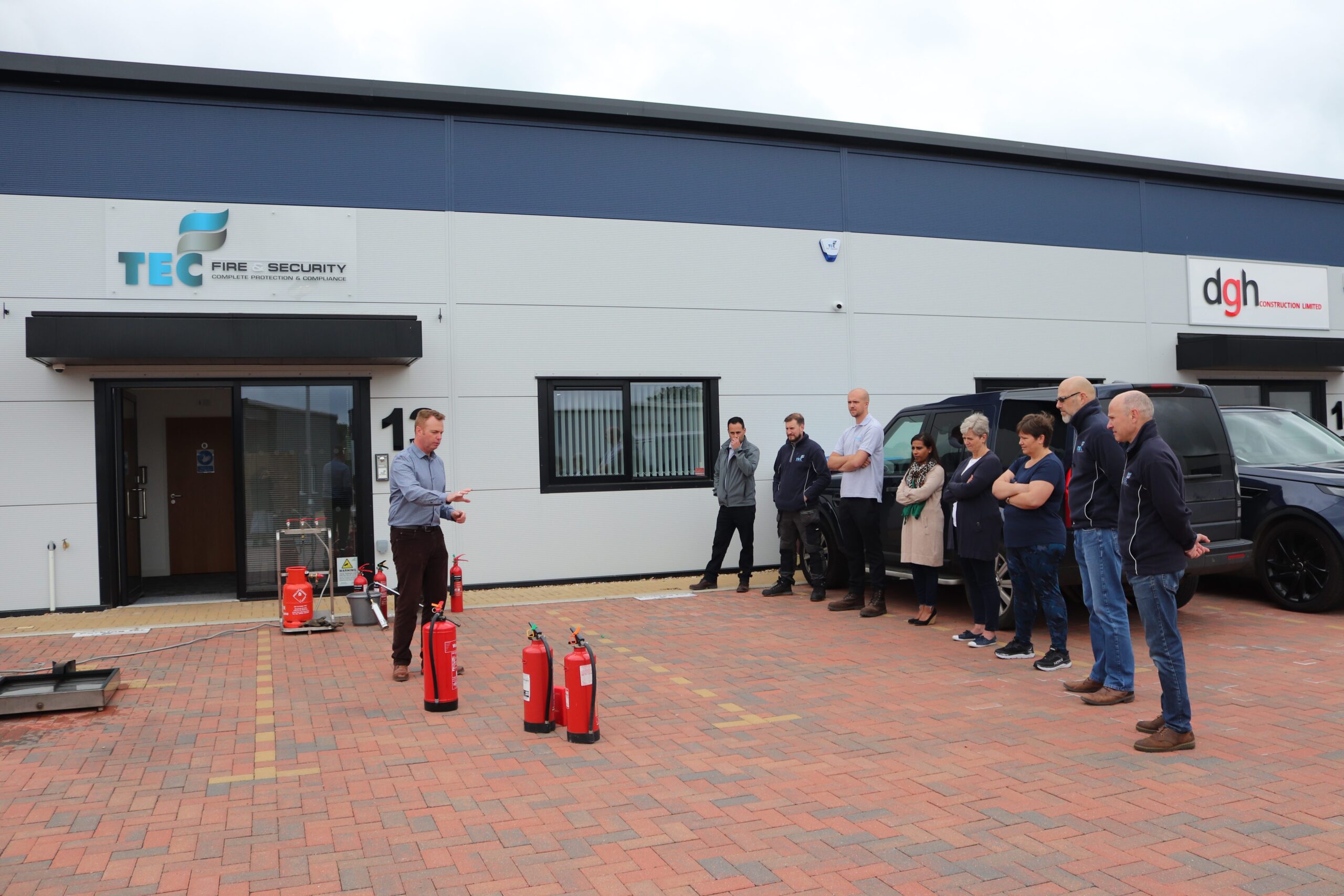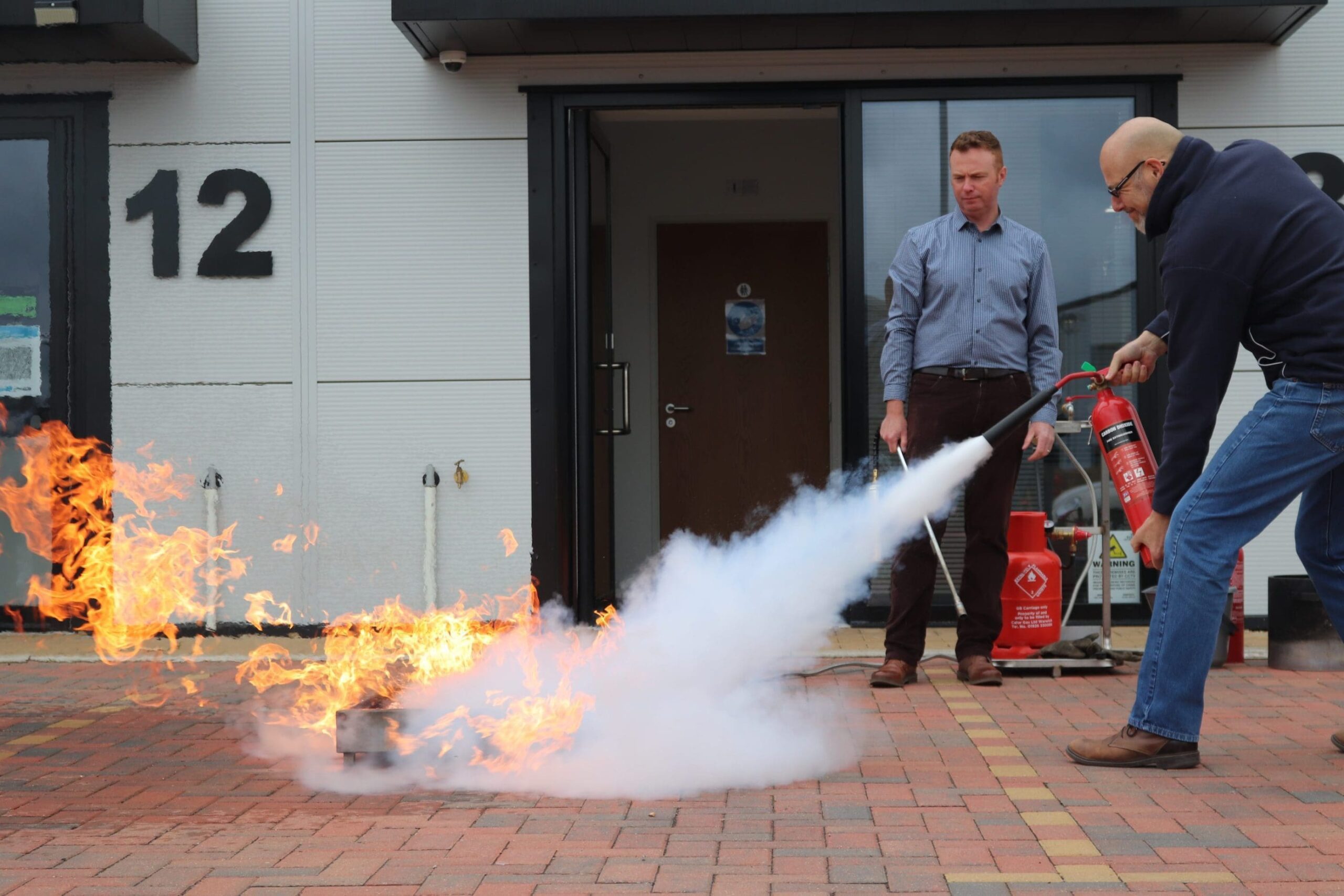So many employers make the same fire safety mistake – and it’s an easy trap to fall into.
Imagine the scenario – you’ve undergone your fire risk assessment. As a result, your premises are now adorned with a smart array of new fire extinguishers. Job done!
Well, not quite. Placing a comprehensive collection of fire extinguishers in a building will do nothing to improve its fire safety unless its occupants know how to use them. And that means training, proper training. You are obliged by law to ensure that your people undergo appropriate fire extinguisher training specifically geared towards the building they occupy and the processes you carry out.

What should fire safety training comprise?
An effective training programme needs to cover more than the mere basics of fire extinguisher operation. Having followed the course, the trainees should know:
What specific purpose each type of fire extinguisher fulfils – what kind of fire it’s designed to extinguish
Which type of extinguisher to use depending on the type of fire
When to use each type of extinguisher
How to operate them – it’s not just a question of ‘point and squeeze’
A well-designed fire extinguisher training course should give trainees the confidence to identify the type of fire and judge whether and how to operate an extinguisher to put it out.
The first principle of fire extinguisher training is to understand the relevance of a building’s structure and purpose to fire risk. For example, an office complex would have different sources of fire risks than a hospital. Trainees also need to identify the different key fire risks within a building – for example, the kitchen area and sources for electrics or heating. They need to be aware, too, of how different types of fire can start.
Different types of fire and knowing the right extinguishers
Trainees need to understand that there are different types of fires. If the wrong extinguisher is used, it could even make the fire worse. Here are the five main classes of fire:
Ordinary materials such as wood, paper and cloth
Flammable liquids such as gasoline and alcohol
Electrical equipment
Combustible metals such as magnesium and titanium
Vegetable or animal oils
Each of these will need to be dealt with using a different extinguisher.
How to locate fire extinguishers
Employees will need to become familiar with where the fire extinguishers are located. In an emergency, they’ll need to know where to locate the right type quickly. They should also be able to identify whether an extinguisher is sufficiently charged and if it’s damaged in any way.
Learning how to quickly assess a fire
Trainees following fire extinguisher training will need to know whether to fight a fire or abandon it. They need to be able to judge the scale of the fire, whether it’s likely to get out of control and when to call 999. They also need to have an idea about fumes and smoke and to deal with each.
How to operate a fire extinguisher
An effective fire extinguisher training course will teach people how to aim and apply each type of extinguisher calmly and when to stop using it. The more they understand and practise the operation, the less likely they are to panic and make mistakes.
A fire safety training provider you can trust
Fire extinguisher training is a serious matter. As an employer, you are legally obliged to ensure that your people have undergone adequate training. The team at TEC Fire & Security takes training seriously and understands that well-trained employees will be safer and feel safer.
For a no-obligation conversation, call TEC Fire & Security on 01234 345117 or visit the website www.tecfireandsecurity.co.uk














